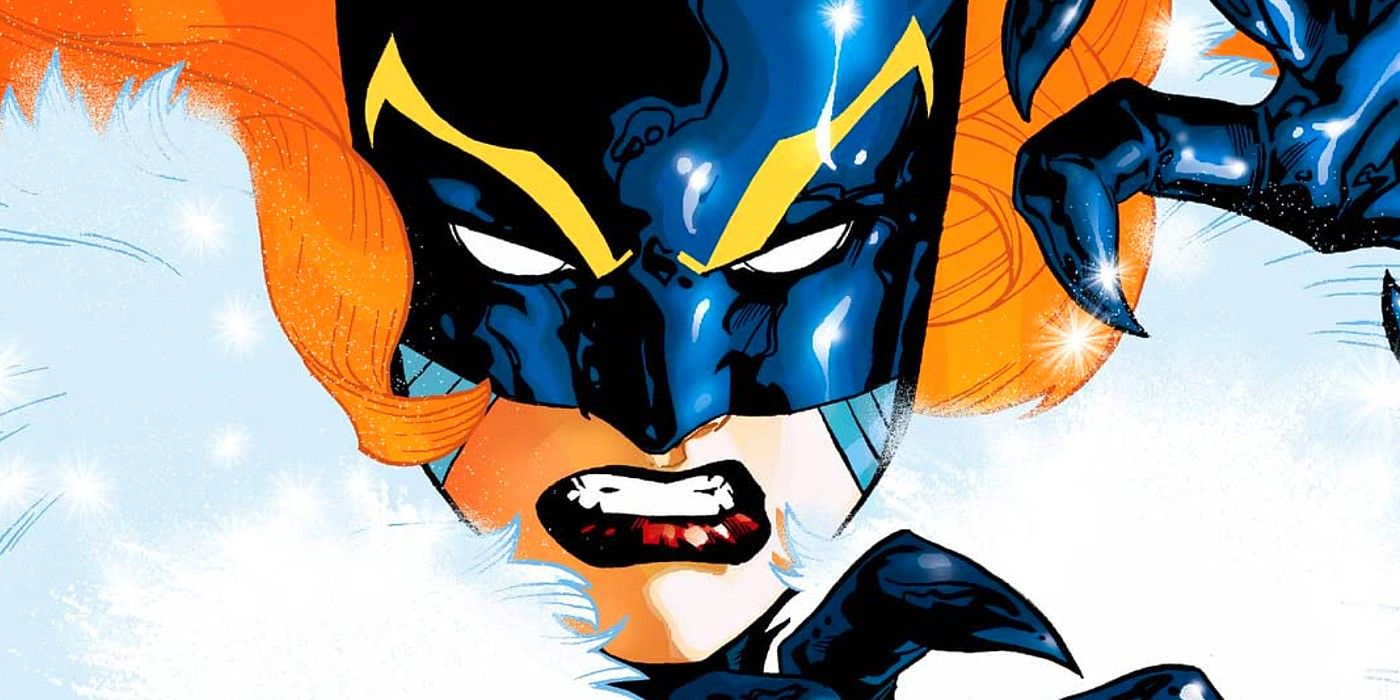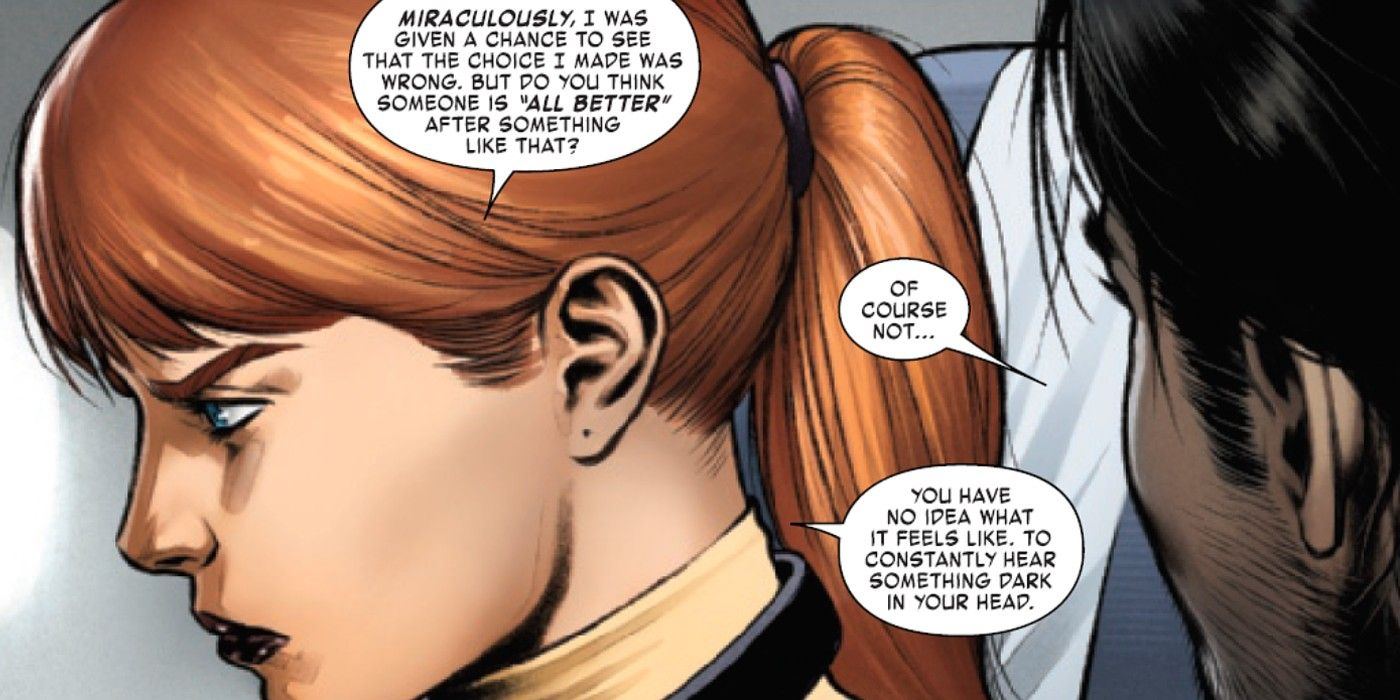
Warning: contains spoilers for Iron Man #3!
Marvel is finally revisiting the death of Hellcat and exploring how taking her own life has changed her. Suicide is a tragic reality that affects millions of people each year. Discussions regarding mental health are becoming more prevalent, and these topics have made their way into almost every form of media, including comic books. Superheroes often deal with death, and the topic has been handled in a variety of ways. When handled with attention and care, the topic of suicide can give a story a very profound and meaningful message. Using it carelessly, however, can be extremely insensitive and can greatly damage a story.
Patricia Walker, aka Hellcat, was created by Stuart Little and Ruth Atkinson, and first appeared in 1944’s Miss America Magazine #2. Originally a romance character, it wasn’t until decades after her introduction that the character began fighting crime, but she has still certainly made a name for herself among Marvel’s heroes. She has fought alongside many heavy hitters, and has even spent time as an Avenger and a Defender. Recently, Patsy has become even more recognizable thanks to the Netflix show Jessica Jones, in which she acts as Jessica’s best friend. At one dark point in Hellcat’s history, however, the hero committed suicide, and Marvel is currently revisiting that moment from a more nuanced perspective.
In Iron Man #3 by Christopher Cantwell and Cafu, Tony Stark and Patsy get into a heated discussion while sitting in the coach section of an airplane. Tony mentions how people have a tendency to make anything he does look bad, and Patsy asks if that really matters. Tony responds, “Well, it doesn’t matter to you because you’re not as famous as me.” This strikes a nerve in Patsy, who claims that she knows what is important to her because she has died before. Tony mentions that he too has died in the past, but Patsy replies, “Not by choice, you haven’t.” This is a reference to Patsy’s suicide in Hellstorm: Prince of Lies #14 by Warren Ellis and Peter Gross. In the story, Patsy is suffering from madness after seeing the true face of her husband, Daimon Hellstrom, the Son of Satan. The entity known as Deathurge takes advantage of her poor mental state and convinces Patsy to kill herself.

Patsy was eventually brought back to life, but her suicide was generally glossed over - treated more as "death by super-villain" than anything with deeper roots in her own intent. In conversation with Tony, Patsy explains that she has never really recovered from that experience and that she is constantly battling dark thoughts. As a result of this inner conflict, she doesn’t place very much concern on what others think of her. Once she has said her piece, and Tony has apologized, Patsy puts on headphones and the two heroes spend the rest of the flight in silence.
Presented more in the context of Hellstrom's subsequent anguish than her own suffering, Hellcat’s suicide was largely ignored by Marvel Comics for years, so it is good to see that they are finally paying attention to what impact it had on her as a character. Going through such a traumatic experience would absolutely leave someone with dark thoughts, and it's great to see Hellcat take control of her own narrative and push back against the idea that her experiences are chiefly about anyone else, whether that be Iron Man or the Son of Satan. In taking an old storyline and using it as a way to discuss mental health, Marvel are not only telling the best possible story, but giving Hellcat the respect she deserves. To anyone having negative thoughts, reaching out to loved ones or calling the Suicide Prevention Lifeline can be incredibly helpful resources.
from ScreenRant - Feed https://ift.tt/2Hf3jTM

No comments: